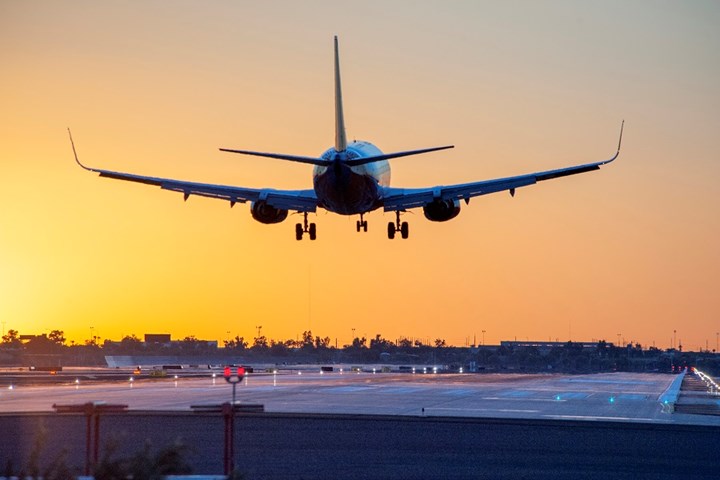Most Americans – about 90% - have a regional airport on their doorstep, or at least a 30-minute drive away. So, it makes sense to fly from regional hubs closer to home. And yet, the United States, along with Europe and the United Kingdom, is seeing a decline in air traffic from regional airports.
This is despite the fact that airline passenger volumes are expected to boom in 2024, driven largely by domestic travel. The United States Travel Association is projecting a strong showing for domestic leisure travel next year, which should reach two billion trips and continue to climb. As a result, we are seeing airlines opening new and seasonal routes to satisfy passenger demand for flights to destinations like the Caribbean and Mexico.
So what is holding regional airports back?
Catering to the needs of airlines – particularly low-cost carriers – is fundamental. Airlines are unlikely to put on more than a few frequencies per week or even opt for seasonal routes. Therefore, airlines will not want to pay for new digital or operational infrastructure to support their service. It make no sense.
This puts the onus on the airport to invest in this infrastructure. Faced with dynamic and changeable flight schedules, small budgets, capacity limitations around passenger numbers and the size of aircraft they can comfortably accommodate, this can be challenging.
Similarly, what attracts passengers to smaller airports is the prospect of having all the digital services of a big hub airport but not the hassle of long waiting lines or walking for miles.
Technology: The game-changer
The regional airports that will thrive will be those that proactively tackle these challenges by adapting their business models and harnessing the digital technologies that make them more efficient, attractive to airlines and which offer a positive passenger experience.
According to SITA's Passenger IT Insights, released in September 2023, today’s airline passengers are comfortable using technology and new digital services to make their travel experience easier and more enjoyable. They are open to increased digitalization across the entire travel experience, from boarding and security, to identity verification and automated checks.
Recognizing this, many of the bigger airports in the United States are already making headway with their digital transformation efforts. The likes of Miami International Airport is already deploying 5G wireless capabilities, which can support the increased bandwidth demands of mobile applications and new technologies like virtual reality, biometrics and real-time advanced video analytics. Other large airports around the world are implementing SITA’s full suite of connectivity solutions, as well as our baggage management tools, passenger processing and operational systems.
Flexible solutions that work for regionals
The good news is that these technologies are no longer the preserve of large airports. Regional airports have at their disposal new, cloud-based, scalable technology solutions that are cost-effective tools to help them become more attractive to both passengers and airlines.
In Australia, for example, SITA’s cloud-based Flex solution has enabled regional airports like Newcastle Airport to grow their passenger capacity without blowing the IT budget. SITA Flex Essentials maximizes the efficient use of limited physical space, facilitating seamless transitions between dedicated and shared check-in and boarding gate counters. Its plug-and-play functionality eliminates the need for onsite infrastructure while ensuring robust security measures are in place.
From a space-saving perspective, opting for a cloud-based service means that regional airports will not find their growth limited by the need to increase their physical footprint. This means that regional airports with a smaller physical footprint can run the same world-class systems and services you’d expect from major international airports, which gives them the same agility to support airlines as they change and add new routes. Increasing the capacity without investments in bricks and mortar.
The case for US regional air mobility
There are a variety of economic and social reasons why regional airports around the United States should be supported and encouraged to grow and develop. By developing these existing infrastructure points into transit and travel nodes, there is an opportunity to drive economic activity within local communities. Stronger regional airports could also absorb some of the pressure on the world’s 200 major airports which handle 43% of the world’s passengers but are buckling as traveler numbers swell and amidst staff shortages, budgetary constraints and flight disruptions due to extreme weather events.
Regional airports already play an important role in connecting communities across the United States. Industry experts believe that in spite of the declining share of domestic air traffic by regional airports over the past three decades, the rapid technological advances the air transport industry has seen in recent years means that regional airports are becoming as competitive as the bigger hubs.
Finally, the airport congestion mentioned earlier and demand for more regional travel all point to the need to develop key regional infrastructure capable of handling more short-haul air travel routes of between 150km and 800km in length to keep America connected.
For this to happen, technology will be the ultimate enabler that United States’ regional airports need to transform into the travel hubs of the future.







0 Comments